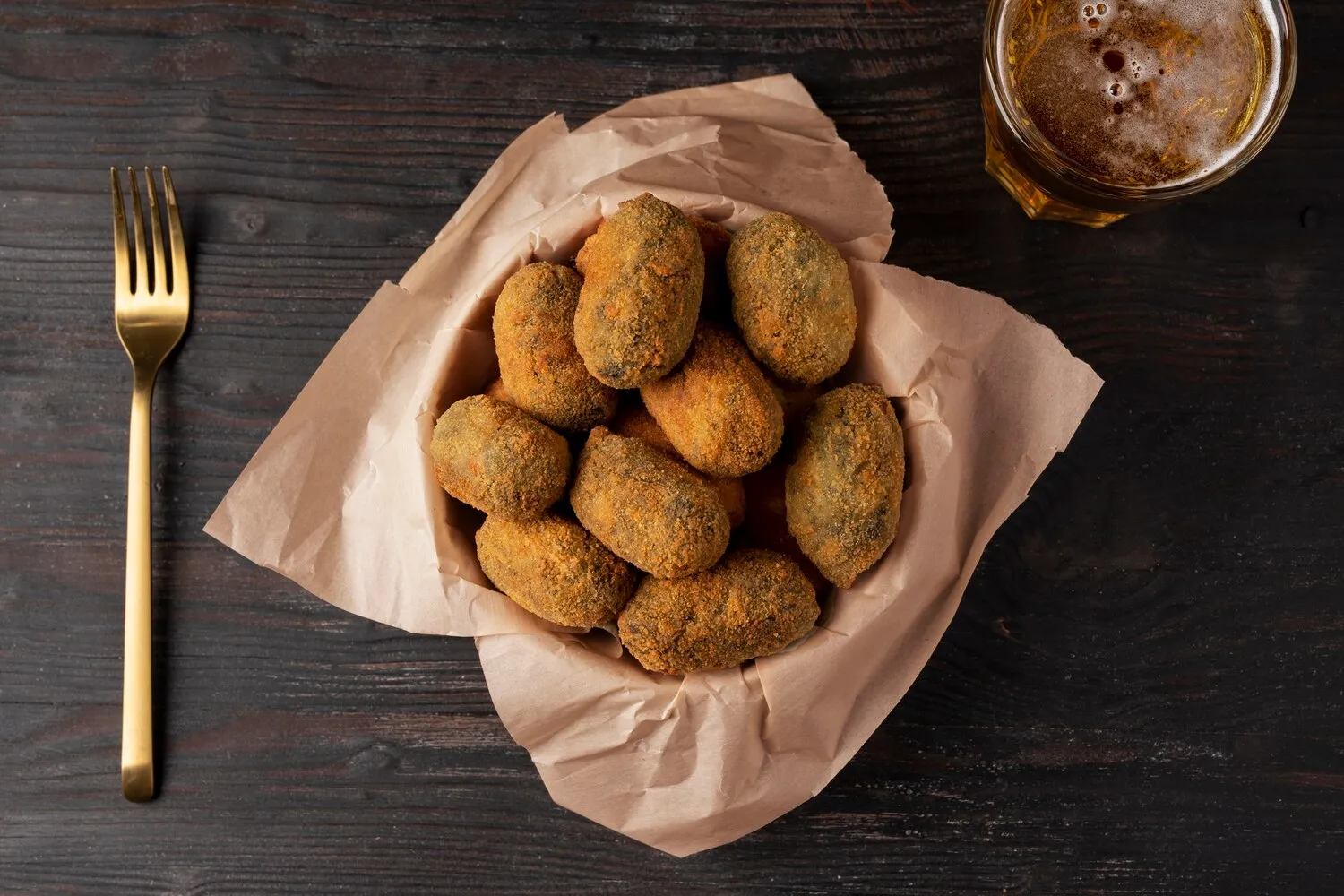
Croquetas
Croquettes.
Nutrition Facts
* The % Daily Value (DV) tells you how much a nutrient in a serving of food contributes to a daily diet. 2,000 calories a day is used for general nutrition advice.
Croquettes are believed to have originated in France in the 17th century as a way to repurpose leftover meat and vegetables. The dish quickly gained popularity throughout Europe and evolved with regional variations, particularly in Spain and the Netherlands.
Croquetas hold significant cultural importance, especially in Spain, where they are a staple tapas dish enjoyed in bars and restaurants across the country. They represent a tradition of resourceful cooking and communal eating.
Tapas Culture
In Spain, croquetas are a quintessential tapas item, often enjoyed with a glass of wine or beer. They are a social food, meant to be shared and enjoyed amongst friends and family.
Family Tradition
Making croquetas is often a family affair, with each generation passing down their own secret recipes and techniques. It's a way to connect with heritage and preserve culinary traditions.
Regional Variations
Different regions of Spain have their own unique croqueta variations, reflecting local ingredients and culinary preferences. For example, in coastal regions, seafood croquetas are common, while inland regions may feature variations with game meats.
Croquetas offer a delightful combination of creamy, savory, and crispy textures. The flavor profile varies significantly depending on the filling ingredients, but the overarching theme is a comforting and rich taste.
The core flavor comes from the béchamel sauce base, which provides a creamy and milky foundation. The filling ingredients, such as ham (jamón), chicken, cod (bacalao), mushrooms, or cheese, contribute distinctive savory notes. The deep-frying process adds a crispy exterior that contrasts beautifully with the soft interior, enhancing the overall sensory experience. Garlic, onion, and various spices are often incorporated to further enhance the flavor.
Béchamel Consistency
The béchamel sauce should be thick enough to hold its shape but still creamy. Cooking it slowly and stirring constantly is crucial to prevent lumps and ensure a smooth texture.
Chilling Time
Allow the béchamel mixture to chill thoroughly in the refrigerator, preferably overnight. This will make it easier to shape the croquetas and prevent them from falling apart during frying.
Crumbing Technique
Use a three-step crumbing process: flour, egg, and breadcrumbs. Ensure that each croqueta is fully coated to create a crispy and protective shell.
Frying Temperature
Maintain the oil temperature at around 350-375°F (175-190°C) for optimal frying. Frying at too low a temperature will result in greasy croquetas, while frying at too high a temperature will cause them to burn on the outside before the inside is heated through.
Explore additional Tapas dishes and restaurants
Explore TapasDiscover top dining spots and culinary experiences in Huelva.
Explore HuelvaLearn more about the food culture, restaurant scene, and culinary heritage of Spain.
Explore Spain